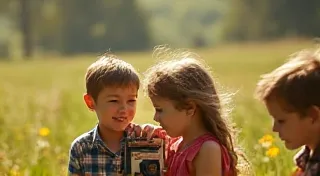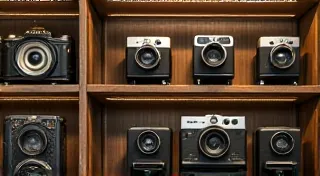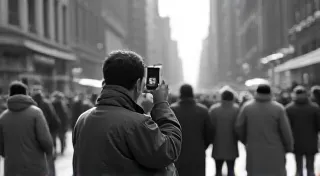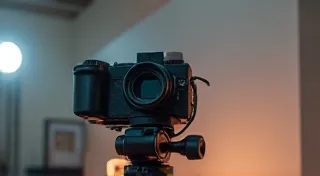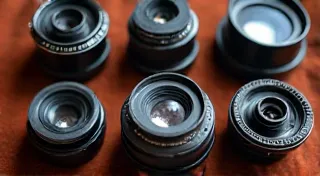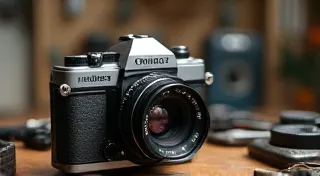Antique Camera Care: Preserving Photographic History
Collecting antique cameras is a fascinating hobby, connecting us to a rich history of innovation and artistry. These cameras are not just objects; they are tangible pieces of photography history, representing the evolution of image-making. However, they are also delicate and require special care to ensure their longevity and preserve their value. This guide provides practical advice on caring for your antique cameras, helping you protect your investment and appreciate these beautiful artifacts for generations to come.
Understanding the Vulnerabilities
Antique cameras face numerous threats. Materials like leather, bellows, and metal are susceptible to deterioration from humidity, temperature fluctuations, and neglect. Bellows can dry out and crack, leather can become brittle and moldy, and metal components can rust or corrode. Even seemingly minor issues can quickly escalate if left unaddressed. The complexity of these machines, particularly older models, often means that even seemingly straightforward repairs require a skilled hand. Understanding the specific type of camera you own - whether it's a sturdy box camera or a more intricate folding camera - is the first step in providing appropriate care.
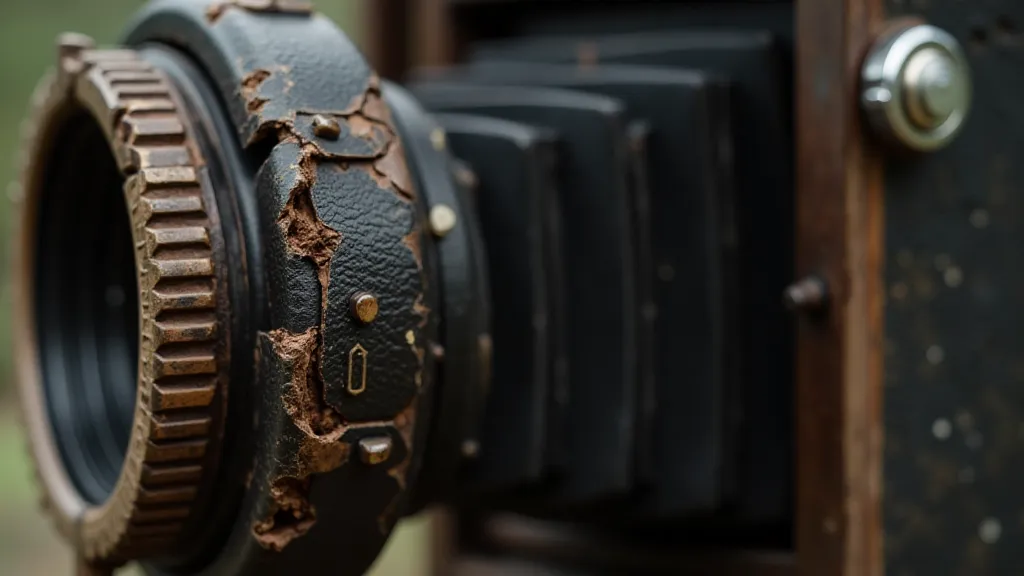
Cleaning Your Antique Camera
Regular cleaning is essential, but it needs to be done with care. Avoid harsh chemicals and abrasive cleaners. Here's a breakdown:
- Exterior Body: Gently wipe down the body with a soft, dry cloth. For stubborn dirt, slightly dampen the cloth with distilled water. Avoid getting water inside the camera.
- Leatherette/Leather: Clean leatherette with a specialized leather cleaner designed for delicate materials. For genuine leather, use saddle soap sparingly. Leather is a particularly sensitive material, and improper cleaning can lead to cracking and discoloration.
- Lens: Use a lens cleaning solution and microfiber cloth designed for camera lenses. Work from the center outward in a circular motion. Avoid excessive rubbing. Lens cleaning is crucial for maintaining image quality, and the right tools and techniques are vital.
- Bellows: Bellows are best left uncleaned unless visibly soiled. If necessary, use a very mild, diluted cleaning solution and a soft cloth, testing in an inconspicuous area first. Bellows deterioration is a common problem; if you encounter significant issues, seeking professional help might be your best option.
Proper Storage: A Critical Component
Storage conditions are just as important as cleaning. The ideal environment is cool, dry, and dark. Proper storage minimizes the degradation process and extends the life of your antique cameras. Ignoring these considerations can lead to irreversible damage.
- Temperature: Avoid extreme temperature fluctuations.
- Humidity: Keep humidity levels stable, ideally between 40% and 60%. Consider using a dehumidifier or desiccant packs in your storage area.
- Light: Store cameras away from direct sunlight, which can fade leather and damage film.
- Positioning: Store cameras in a case or box to protect them from dust and physical damage. If storing for extended periods, loosely pack the camera to prevent pressure on delicate parts.
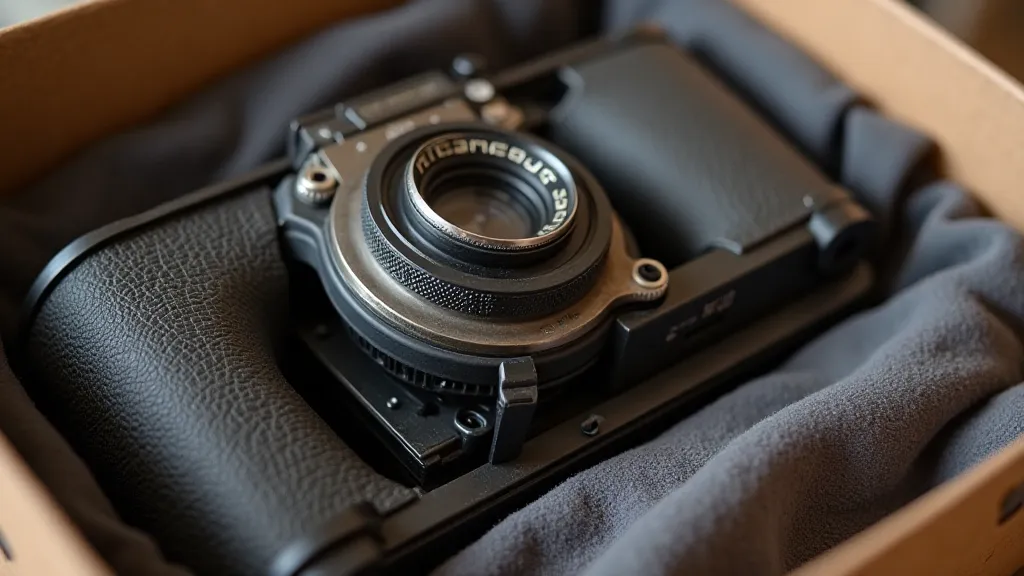
Basic Repairs & Preventative Maintenance
While major repairs are best left to professionals, there are some basic preventative measures you can take. However, diagnosing and fixing issues with antique cameras can be challenging; resources like common problems with antique cameras and how to fix them can prove invaluable when tackling minor repairs.
- Bellows Lubrication: For some cameras, applying a specialized bellows lubricant can help prevent cracking and dryness. Research your camera model specifically to see if this is recommended.
- Rust Prevention: If you notice rust, carefully remove it with a specialized rust remover, following the product instructions carefully. Rust can be particularly damaging, and early intervention is key.
- Tightening Screws: Carefully tighten any loose screws, but avoid over-tightening, which can strip threads.
- Regular Inspection: Periodically inspect your cameras for any signs of damage or deterioration. Early detection can prevent minor issues from becoming major problems. It's helpful to document your findings during these inspections.
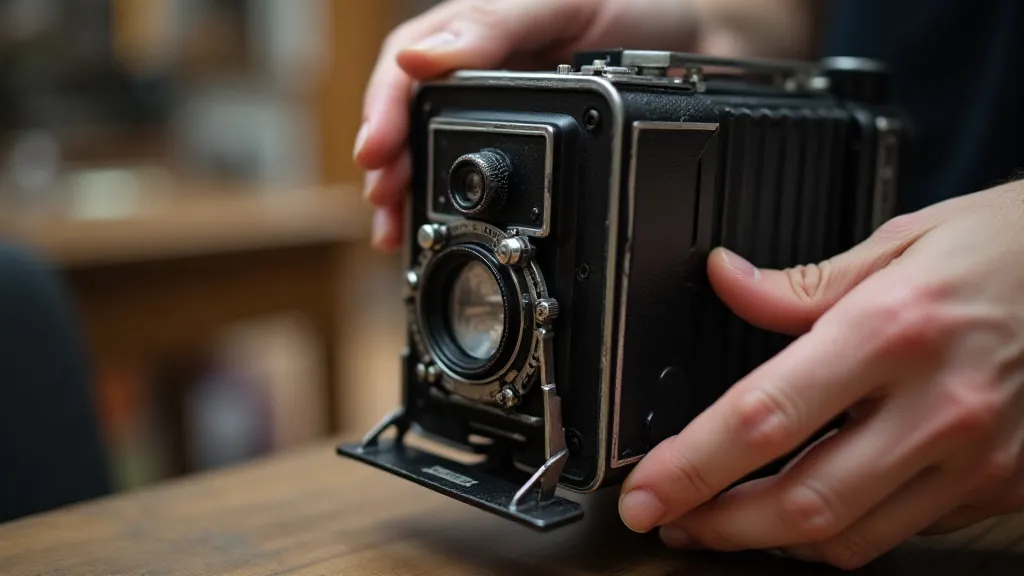
The Stories Behind the Mechanisms: Collecting and the Sentimental Value
Beyond the technical aspects of care, understanding the history and stories attached to antique cameras adds another layer of appreciation. Many of these cameras represent a specific time period, technological advancement, or even the personal legacy of a photographer. They’re more than just mechanical devices; they're windows into the past. Sometimes, you're not just preserving the camera itself, but also a piece of someone's personal history – traces of forgotten moments lingering within the shutter mechanism. Consider the idea of "ghosts in the shutter" – a fascinating concept explored in depth in an article dedicated to how lost memories define collectible cameras. This perspective can enrich your collecting experience and further motivate you to preserve these artifacts.
Seeking Professional Help
For complex repairs or restoration, consult a qualified camera repair technician specializing in antique cameras. They possess the knowledge and experience to handle delicate components and ensure the camera is restored to its original condition. Finding a skilled technician familiar with vintage equipment can be challenging, but well worth the effort for valuable or historically significant cameras. Don't attempt repairs beyond your comfort level, as improper handling can cause irreparable damage.
Advanced Maintenance: Disassembly and Cleaning (Proceed with Caution!)
For the truly dedicated collector, some advanced maintenance might involve partial disassembly for thorough cleaning. However, this is a task best left to experts unless you have extensive experience and a deep understanding of the camera’s mechanics. Each camera model is unique, and attempting to disassemble it without proper knowledge can easily result in further damage. When undertaking any restoration project, it’s paramount to document every step, take photographs of the original assembly, and carefully label all parts to ensure proper reassembly. Remember that even seemingly minor errors can compromise the camera’s functionality and value.
Resources for the Antique Camera Enthusiast
Preserving antique cameras is a rewarding endeavor that not only preserves valuable collectibles but also connects us to the history of photography. Beyond the guidelines outlined here, numerous online communities, forums, and repair guides can provide further assistance and inspiration. Many of these resources offer specific advice tailored to particular camera models and common repair techniques. Always research thoroughly before attempting any repairs or restoration projects, and don't hesitate to seek professional help when needed.
Preserving a Legacy
Caring for antique cameras is a rewarding endeavor that not only preserves valuable collectibles but also connects us to the history of photography. By following these simple guidelines, you can ensure that these beautiful machines continue to inspire and delight for generations to come. Remember, respect for these historical artifacts is key to ensuring their survival. And, for those seeking a more in-depth understanding of the restoration process, a step-by-step guide to restoring a vintage camera can provide valuable insights and practical advice.
